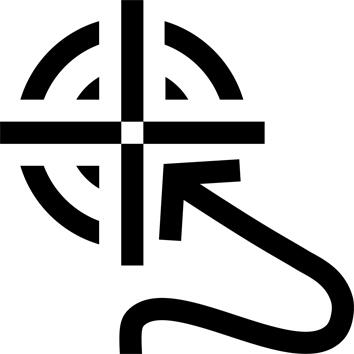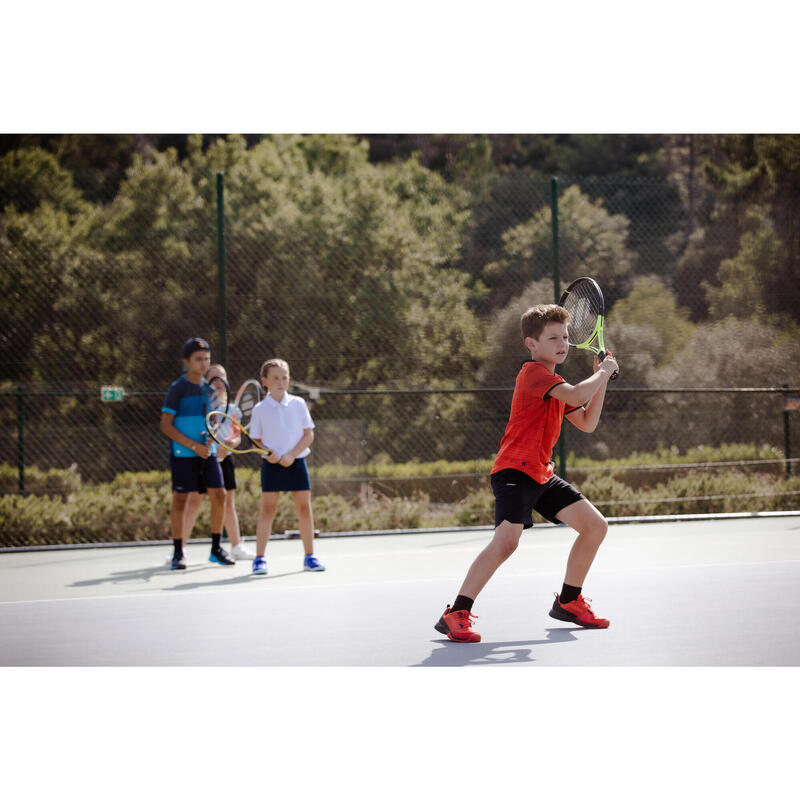TECHNICAL SPECIFICATIONS
Weight: 225 g
Balance: 29 cm
Length: 63.5 cm
Inertia: 178
Sieve size: 660 cm²
String pattern: 16x19
FRAME COMPOSITION
100% graphite frame, with a wide cross-section for excellent impact stability and playing comfort.
TEACHING CONCEPT
> HAND PLACEMENT
Two areas on the handle indicate correct hand positioning:
- The dominant hand should hold the handle below the two dotted lines
- The second hand, especially for two-handed backhands, should be positioned above the two dotted lines
This ensures good power and stability when striking.
TEACHING CONCEPT
> SNOWSHOE GRIPS
Thanks to its three colored markings at the top and bottom of the handle, the TR500 GRAPH helps children to position their hand correctly for forehands, backhands and serves.
Children should position their hand in such a way as to leave visible:
- the yellow marking for forehands
- the white marking for serves
- the gray marking for backhands
This helps to position the racket's sieve correctly when hitting the ball and forces it to cover the ball slightly.
TEACHING CONCEPT
> THE CHAMPION'S POSITION!
When your child is waiting for his partner's ball, he should hold his racket so that the targets on the racket's edge are facing him.
Combined with the position of the legs slightly apart and the knees well bent, he'll be in a waiting position, known as the "CHAMPION POSITION", which puts him in a better position to hit the ball.
TEACHING CONCEPT
> PREPARATION AND END OF GESTURE
In order to achieve a wide, relaxed gesture, we have positioned a target at the end of the racket.
At the start of the stroke, this target should point in the direction of the incoming ball.
At the end of the stroke, it should also point in the direction of the outgoing ball.
This forces your child to position the racket correctly at the start and end of the stroke, and to have a correct, wide, relaxed stroke.
PEDAGOGICAL CONCEPT
> CENTERING ZONE
We've placed a white ball-shaped marking in the middle of the string.
By trying to hit the ball on this marking, your child will concentrate on centering the ball in the sieve and getting the racket in the right position.
This will result in a more effective and more enjoyable hit. In fact, it's in the middle of the screen that hits are most powerful and precise, and where vibrations are least significant.



